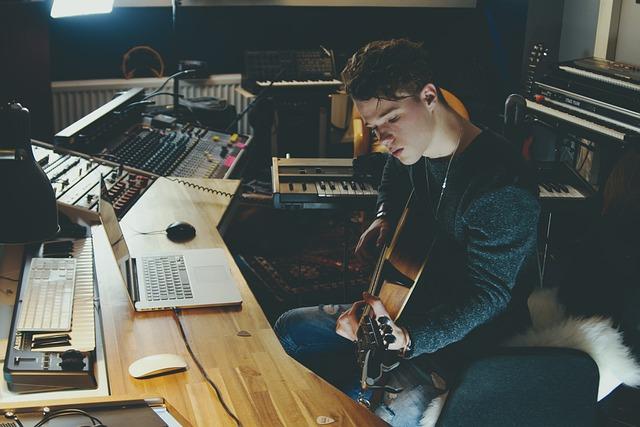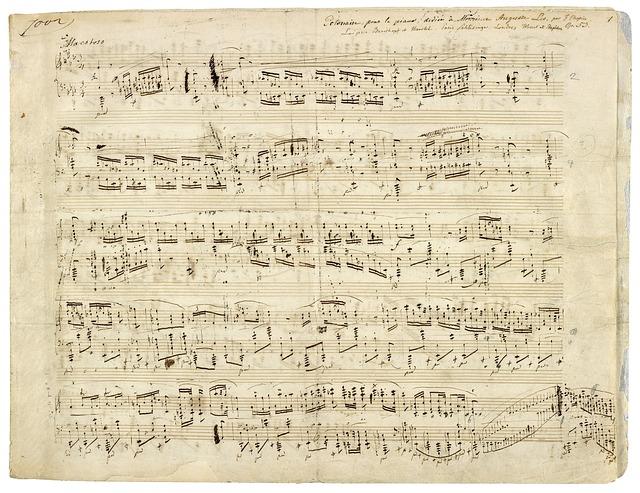In the realm of cinema, where visual storytelling reigns supreme, the power of soundtracks to shape a film’s emotional landscape is both profound and indispensable. Music composers, wielding their unique blend of artistry and technical skill, craft scores that transcend mere accompaniment, becoming pivotal elements that guide audiences through a film’s emotional journey. By meticulously aligning musical themes with narrative arcs, composers enhance the depth and resonance of on-screen moments, turning scenes into visceral experiences. This article delves into the nuanced ways in which music composers influence the emotional tone of films, exploring the intricate interplay between sound and story that captivates and moves audiences worldwide.
Crafting Emotional Landscapes: The Role of Musical Themes
In the intricate world of cinema, musical themes serve as powerful tools to evoke and shape emotional responses. Composers meticulously craft these themes to resonate with the film’s narrative, creating a symbiotic relationship between sound and story. A well-composed theme can transcend dialogue, conveying the unspeakable and heightening the emotional depth of a scene. Through the careful selection of instruments, tempo, and harmony, composers guide the audience’s emotions, subtly influencing their perception of characters and events.
- Character Development: Leitmotifs are used to represent specific characters, evolving as the narrative progresses to reflect their journey.
- Setting the Mood: Minor keys and slow tempos often underscore tension or sorrow, while major keys and brisk tempos convey joy or triumph.
- Foreshadowing: Recurring musical themes can hint at future plot developments, building anticipation and suspense.
By weaving these themes into the fabric of a film, composers don’t just accompany the visuals—they amplify them, ensuring that each note leaves a lasting imprint on the audience’s heart.

The Power of Instrumentation: Building Atmosphere and Tension
The strategic use of instrumentation in film scores is a critical tool for composers aiming to evoke specific emotions and craft immersive experiences. By carefully selecting instruments, composers can subtly influence the audience’s perception of a scene. For instance, the haunting resonance of a solo cello can evoke feelings of loneliness or introspection, while a full orchestral swell might create a sense of triumph or grandeur. The choice of instruments is not just about the sound they produce, but also the cultural and emotional associations they carry. A composer might use a traditional flute to invoke a sense of mystery or nostalgia, drawing the audience deeper into the narrative.
- Strings: Often used to create tension, from the rapid tremolo of violins to the deep, resonant chords of cellos.
- Brass: Can denote power or impending doom, with bold, brassy tones that demand attention.
- Percussion: Builds intensity and drives action, using rhythms that quicken the pulse.
- Woodwinds: Evoke emotion and introspection, often used in scenes of calm or reflection.
By manipulating these elements, composers not only complement the visual storytelling but also shape the emotional landscape, guiding viewers through a film’s highs and lows with precision and artistry.

Harmonic Choices: Guiding Audience Emotions
Music composers wield the power of harmony to evoke and guide emotions in film audiences. By strategically selecting chord progressions and harmonic structures, they craft soundscapes that resonate with the narrative’s emotional arc. Consider the use of minor chords to evoke feelings of melancholy or tension; these choices often underscore moments of introspection or suspense. Conversely, major chords can inject a scene with warmth and optimism, aligning perfectly with triumphant or romantic sequences.
- Dissonance: Often used to create a sense of unease or conflict.
- Consonance: Brings a sense of resolution and peace.
- Modulation: Shifts in key can reflect changes in mood or perspective.
Composers also employ modulation to mirror dynamic emotional shifts within a story. A sudden change in key can signify a pivotal moment, capturing the audience’s attention and amplifying the impact of the scene. Through these deliberate harmonic choices, composers are not just adding music to a film—they are shaping the very emotional landscape that audiences experience.

Strategic Silence: Enhancing Impact Through Absence
In the realm of film music, the absence of sound can be as powerful as its presence. Strategic silence allows composers to amplify emotions and heighten tension, creating an immersive experience for the audience. This technique involves the deliberate omission of music or sound to enhance dramatic effect, often leaving viewers on the edge of their seats. Silence can serve various purposes in a film’s narrative:
- Building Suspense: A quiet moment before a climactic scene can intensify anticipation, making the eventual sound explosion more impactful.
- Highlighting Dialogue: Removing background music during crucial conversations ensures that every word resonates with clarity and weight.
- Creating Contrast: Alternating between silence and sound accentuates emotional highs and lows, crafting a more dynamic storytelling arc.
Composers like Hans Zimmer and Ennio Morricone have mastered this art, utilizing silence to guide the audience’s emotional journey. By doing so, they demonstrate that sometimes, the most profound musical statement is the one left unsaid.

